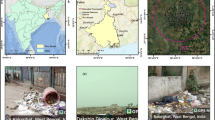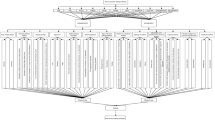Abstract
The pollution and emission caused by the manufacturing, operation, and scrapping of marine ships have considerable impact on the environment. Therefore, it is essential to develop an effective and efficient approach toward evaluating the environmental impact of ships. This study uses the green degree of ships concept to evaluate different alternatives. Because environmental evaluation involves several criteria, the problem can be formulated as a traditional multi-criteria decision-making (MCDM) model. In this regard, the main innovation of this study is the development of an improved MCDM model using a novel hybrid method, namely the group fuzzy entropy and cloud technique for order of preference by similarity to ideal solution theory. The developed model calculates the criteria weight and rank based on the selected criteria and alternatives. Finally, a criteria system is developed to evaluate several classical alternatives, and various sensitivity analyses were carried out to validate the robustness of the proposed methodology. The results revealed that the model and criteria system can provide several quantitative and qualitative indicators for governmental policy-makers and agencies, environmental consultants, and environmental service organizations.
Graphic abstract





Similar content being viewed by others
Abbreviations
- MCDM:
-
Multi-criteria decision making
- DM:
-
Decision maker
- TOPSIS:
-
Technique for order of preference by similarity to ideal solution
- AHP:
-
Analytic hierarchy process
- ELECTRE:
-
Elimination et choix traduisant la realité
- PROMETHEE:
-
Preference ranking organization method for enrichment evaluations
- VIKOR:
-
VlseKriterijumska Optimizacija I Kompromisno
- DEMATEL:
-
Decision-making trial and evaluation laboratory
References
Boran FE, Genç S, Kurt M, Akay D (2009) A multi-criteria intuitionistic fuzzy group decision making for supplier selection with TOPSIS method. Expert Syst Appl 36(8):11363–11368
Bui TX, Goos G, Hartmanis J (1987) Co-oP: a group decision support system for cooperative multiple criteria group decision making. Springer, Berlin
Chang TC, Wang H (2016) A multi criteria group decision-making model for teacher evaluation in higher education based on cloud model and decision tree. Eurasia J Math Sci Technol 12(5):1243–1262
Corbett JJ, Winebrake JJ, Green EH, Kasibhatla P, Eyring V, Lauer A (2007) Mortality from ship emissions: a global assessment. Environ Sci Technol 41(24):8512–8518
Delgado A, Romero I (2016) Environmental conflict analysis using an integrated grey clustering and entropy-weight method: a case study of a mining project in Peru. Environ Model Softw 77:108–121
Deng H, Yeh CH, Willis RJ (2000) Inter-company comparison using modified TOPSIS with objective weights. Comput Oper Res 27:963–973
Diab F, Lan H, Ali S (2016) Novel comparison study between the hybrid renewable energy systems on land and on ship. Renew Sustain Energy Rev 63:452–463
Durán-Grados V, Mejías J, Musina L, Moreno-Gutiérrez J (2018) The influence of the waterjet propulsion system on the ships’ energy consumption and emissions inventories. Sci Total Environ 631–632:496–509
Ebrahimnejad S, Mousavi SM, Mojtahedi SM (2008) A fuzzy BOT project risk evaluation model in Iranian power plant industry. In: 2008 IEEE international conference on industrial engineering and engineering management, 8 Dec 2008, pp 1038–1042
Fathollahi-Fard AM, Hajiaghaei-Keshteli M, Mirjalili S (2018) Hybrid optimizers to solve a tri-level programming model for a tire closed-loop supply chain network design problem. Appl Soft Comput 70:701–722
Fathollahi-Fard AM, Govindan K, Hajiaghaei-Keshteli M, Ahmadi A (2019a) A green home health care supply chain: new modified simulated annealing algorithms. J Clean Prod 240:118200
Fathollahi-Fard AM, Hajiaghaei-Keshteli M, Mirjalili S (2019b) A set of efficient heuristics for a home healthcare problem. Neural Comput Appl. https://doi.org/10.1007/s00521-019-04126-8
Fathollahi-Fard AM, Ranjbar-Bourani M, Cheikhrouhou N, Hajiaghaei-Keshteli M (2019c) Novel modifications of social engineering optimizer to solve a truck scheduling problem in a cross-docking system. Comput Ind Eng 137:106103
Gilbert P, Wilson P, Walsh C, Hodgson P (2017) The role of material efficiency to reduce CO2 emissions during ship manufacture: a life cycle approach. Mar Policy 75:227–237
Goldsworthy B, Goldsworthy L (2019) Assigning machinery power values for estimating ship exhaust emissions: comparison of auxiliary power schemes. Sci Total Environ 657:963–977
Govindan K, Rajendran S, Sarkis J, Murugesan P (2015) Multi criteria decision making approaches for green supplier evaluation and selection: a literature review. J Clean Prod 98(1):66–83
Guo RX, Xia JB, Zhang L, Qian Y (2010) Research on multiple attribute evaluation method based on cloud model. In: 2010 2nd international conference on advanced computer control
Haralambopoulos DA, Polatidis H (2003) Renewable energy projects: structuring a multicriteria group decision-making framework. Renew Energy 28(6):961–973
Herrera F, Herrera-Viedma E, Verdegay JL (1997) Rational consensus model in group decision making using linguistic assessments. Fuzzy Sets Syst 88(1):31–39
Herrera-Viedma E, Chiclana F, Herrera F, Alonso S (2007) Group decision-making model with incomplete fuzzy preference relations based on additive consistency. IEEE Trans Syst Man Cybern Part B (Cybern) 37(1):176–198
Ho W, Xu X, Dey PK (2010) Multi-criteria decision making approaches for supplier evaluation and selection: a literature review. Eur J Oper Res 202(1):16–24
Jiang Z et al (2019) A hybrid approach of rough set and case-based reasoning to remanufacturing process planning. J Intell Manuf 30:19–32
Lan H, Wen S, Hong Y, Yu DC, Zhang L (2015) Optimal sizing of hybrid PV/diesel/battery in ship power system. Appl Energy 158:26–34
Lee KJ, Shin D, Yoo DW, Choi HK, Kim HJ (2013) On battery state estimation algorithms for electric ship applications. Energy 49(1):475–483
Li DY (1998) Uncertainty reasoning based on cloud models in controllers. Comput Math Appl 35(3):99–123
Li PK, Liu BD (2008) Entropy of credibility distributions for fuzzy variables. IEEE Trans Fuzzy Syst 16(1):123–129
Li DY, Liu C, Gan W (2009) A new cognitive model: cloud model. Int J Intell Syst 24:357–375
Li J, Zhang Q, Yan F, Zhong M (2017) A cloud model-based multi-level fuzzy comprehensive evaluation approach for financing credit of scientific & technological small-medium enterprises. J Differ Equ Appl 23:443–456
Li WS, Zhao J, Xiao B (2018) Multimodal medical image fusion by cloud model theory. SIViP 12:437–444
Liu BS, Shen Y, Chen X, Wang Y (2015) A two-layer weight determination method for complex multi-attribute large-group decision-making experts in a linguistic environment. Inf Fusion 23:156–165
Liu HC, Li Z, Song W, Su Q (2017) Failure mode and effect analysis using cloud model theory and PROMETHEE method. IEEE Trans Reliab 66(4):1058–1072
Lotfi FH, Fallahnejad R (2012) Imprecise Shannon’s entropy and multi attribute decision making. Entropy 12(1):53–62
Luukka P (2011) Feature selection using fuzzy entropy measures with similarity classifier. Expert Syst Appl 38:4600–4607
Maroušek J (2014) Novel technique to enhance the disintegration effect of the pressure waves on oilseeds. Ind Crops Prod 53:1–5
Mendoza GA, Martins H (2006) Multi-criteria decision analysis in natural resource management: a critical review of methods and new modelling paradigms. For Ecol Manag 230(1–3):1–22
Oztaysi B (2014) A decision model for information technology selection using AHP integrated TOPSIS-Grey: the case of content management systems. Knowl Based Syst 70:44–54
Pérez IJ, Cabrerizo FJ, Alonso S, Herrera-Viedma E (2014) A new consensus model for group decision making problems with non-homogeneous experts. IEEE Trans Syst Man Cybern Syst 44(4):494–498
Pohekar SD, Ramachandran M (2004) Application of multi-criteria decision making to sustainable energy planning—a review. Renew Sustain Energy 8(4):365–381
Rezaei J (2015) A systematic review of multi-criteria decision-making applications in reverse logistics. Transp Res Procedia 10:766–776
Rostamzadeh R, Govindan K, Esmaeili A, Sabaghi M (2016) Application of fuzzy VIKOR for evaluation of green supply chain management practices. Ecol Indic 61(2):1055
Roubens M (1997) Fuzzy sets and decision analysis. Fuzzy Sets Syst 90(2):199–206
Song W, Ming X, Wu Z, Zhu B (2014) A rough TOPSIS approach for failure mode and effects analysis in uncertain environments. Qual Reliab Eng Int 30(4):473–486
Szmidt E, Kacprzyk J (2001) Entropy for intuitionistic fuzzy sets. Fuzzy Sets Syst 118(3):467–477
Tian G, Zhang H, Feng Y, Jia H, Zhang C, Jiang Z, Li L, Li P (2018a) Operation patterns analysis of automotive components remanufacturing industry development in China. J Clean Prod 64:1363–1375
Tian G, Zhang H, Feng Y, Wang D, Peng Y, Jia H (2018b) Green decoration materials selection under interior environment characteristics: a grey-correlation based hybrid MCDM method. Renew Sustain Energy Rev 81:682–692
Tian G, Zhou M, Li P (2018c) Disassembly sequence planning considering fuzzy component quality and varying operational cost. IEEE Trans Autom Sci Eng 15:748–760
Wan Z, Wang L, Li Y (2010a) The research for DEMATEL method applied to fuzzy evaluation of green degree of ship. In: 6th international conference on advanced information management and service
Wan Z, Wang M, Wang L (2010b) Applying fuzzy matter-element method to evaluating the green degree of ship. In: 6th international conference on advanced information management and service
Wang HL (2008) Grey cloud model and its application in intelligent decision support system supporting complex decision. In: ISECS international colloquium on computing, communication, control, and management 2008
Wang D et al (2016) A cloud model-based approach for water quality assessment. Environ Res 148:24–35
Wang KQ, Liu HC, Liu LP, Huang J (2017) Green supplier evaluation and selection using cloud model theory and the QUALIFLEX method. Sustainability 9(5):688
Wang JJ, Miao ZH, Cui FB, Liu HC (2018) Robot evaluation and selection with entropy-based combination weighting and cloud TODIM approach. Entropy 20:349
Xu ZS (2008) Group decision making based on multiple types of linguistic preference relations. Inf Sci 178(2):452–467
Xu ZS (2011) Approaches to multiple attribute group decision making based on intuitionistic fuzzy power aggregation operators. Knowl Based Syst 24(6):749–760
Xu ZS, Cai XQ (2012) Minimizing group discordance optimization model for deriving expert weights. Group Decis Negot 21(6):863–875
Ye J (2010a) Multicriteria fuzzy decision-making method using entropy weights-based correlation coefficients of interval-value intuitionistic fuzzy sets. Appl Math Model 34:3864–3870
Ye J (2010b) Two effective measures of intuitionistic fuzzy entropy. Computing 87:55–62
Yoon K, Hwang CL (1995) Multiple attribute decision making: an introduction. Sage Publications, Thousand Oaks
Yue Z (2011a) A method for group decision-making based on determining weights of decision makers using TOPSIS. Appl Math Model 35(4):1926–1936
Yue Z (2011b) An extended TOPSIS for determining weights of decision makers with interval numbers. Knowl Based Syst 24(1):146–153
Yue Z (2012) Approach to group decision making based on determining the weights of experts by using projection method. Appl Math Model 36(7):2900–2910
Zadeh LA (1965) Fuzzy sets, information. Control 8:338–353
Zopounidis C, Doumpos M (2002) Multi-criteria decision aid in financial decision making: methodologies and literature review. J Multi-Criteria Decis Anal 11:167–186
Acknowledgements
This study was supported in part by the National Natural Science Foundation of China under Grant No. 51775238, Science and Technology Development Project of Jilin Province under Grant Nos. 20180101060JC and 20180101058JC. We also wish to thank the Editor-in-Chief, the associate editor and anonymous reviewers for their constructive and very useful suggestions.
Author information
Authors and Affiliations
Corresponding author
Additional information
Publisher's Note
Springer Nature remains neutral with regard to jurisdictional claims in published maps and institutional affiliations.
Appendix: Supplementary data
Appendix: Supplementary data
See Tables 8, 9, 10, 11, 12, 13, and 14.
Rights and permissions
About this article
Cite this article
Liu, X., Tian, G., Fathollahi-Fard, A.M. et al. Evaluation of ship’s green degree using a novel hybrid approach combining group fuzzy entropy and cloud technique for the order of preference by similarity to the ideal solution theory. Clean Techn Environ Policy 22, 493–512 (2020). https://doi.org/10.1007/s10098-019-01798-7
Received:
Accepted:
Published:
Issue Date:
DOI: https://doi.org/10.1007/s10098-019-01798-7




